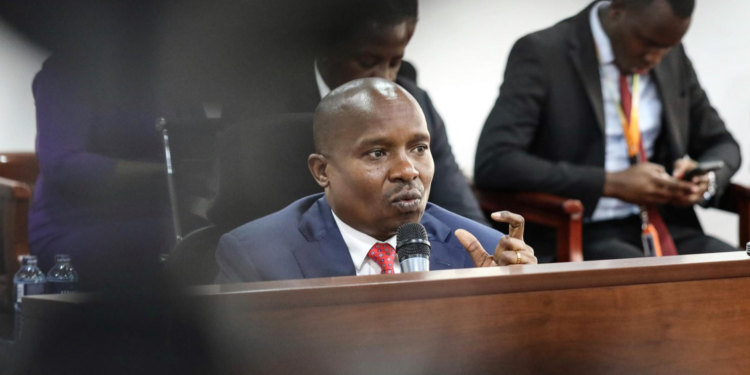Interior Cabinet Secretary Kithure Kindiki has revealed that 42 people died, 130 remain missing, and over 1,200 were arrested during violent protests that rocked the country in June and July this year. Appearing before the National Assembly Committee on National Security on Tuesday, Kindiki also disclosed that the government was still finalizing details regarding the fatalities and would furnish a complete list within 24 hours.*
During his testimony, Kindiki provided a breakdown of the civil unrest that led to widespread destruction and clashes between demonstrators and law enforcement officers. The protests, which erupted over high costs of living and controversial tax policies, escalated into one of the most turbulent periods in recent Kenyan history.
“During the unprecedented demonstrations, there was extensive destruction of public and private property,” Kindiki said. “In the process, 42 people lost their lives, and 1,208 individuals were arrested.”
Kindiki admitted that out of the 42 fatalities, the government had only identified 30 individuals at the time of his statement. He committed to submitting the details of the remaining 12 deaths to the committee within 24 hours. “These deaths are a legal consequence, and the government has nothing to hide. What we need to do is find out the circumstances under which they occurred and ensure justice is served,” he said.
The Cabinet Secretary further disclosed that 132 people were reported missing in the wake of the protests, adding that investigations were underway to locate the individuals. He dismissed allegations that the government was involved in enforced disappearances, a claim frequently raised by human rights groups and opposition figures.
“It is not true to say that the government has a policy on abductions or enforced disappearances,” Kindiki asserted. “This administration does not condone abductions or extrajudicial killings. Any law enforcement officer found to have acted outside the law will be held accountable.”
Despite Kindiki’s reassurances, committee members questioned the government’s response to the protests and the lack of detailed information. Legislators criticized the Cabinet Secretary for only providing statistics, accusing the government of failing to provide the names of the deceased or missing persons. One committee member challenged Kindiki: “These are not just numbers; these are human lives. If you know the number, you surely know the names.”
In response, Kindiki requested additional time to complete the report, explaining that identifying the victims involved a forensic process. He said, “We will trace each death to its specific circumstances, whether caused by police bullets or other factors. But this takes time, and I will ensure all the missing information is available within 24 hours.”
On the issue of missing persons, Kindiki noted that missing persons reports do not automatically indicate abductions, urging caution in drawing conclusions about those who remain unaccounted for. “While we received reports of missing persons from across the country, it is not scientific to claim they were abducted because they participated in demonstrations. Some may resurface after weeks or months, as has happened in the past,” he explained.
The use of lethal force by police during the demonstrations was another point of contention. Kindiki defended law enforcement officers, stating that they are legally allowed to use lethal force under certain circumstances, especially when protecting citizens or property from harm. He added, however, that any officers found to have used excessive force would be prosecuted. “The law permits the police to use lethal force, but it must always be within legal parameters. If any officer violated these rules, they will be held accountable,” he emphasized.
The protests, which began as demonstrations against the Finance Act 2023, spiraled into wider discontent, leading to clashes in several regions. Opposition leader Raila Odinga had called for nationwide protests against what he termed “punitive” government policies. The government’s response to the unrest has been criticized by civil society groups, with many accusing the police of using excessive force to quell the demonstrations.
In closing, Kindiki compared the riots in Kenya to the January 6, 2021, attack on the U.S. Capitol, suggesting that the protestors had intended to undermine the nation’s democratic institutions. “If we had not applied force that day, we would be talking about a different Kenya,” he said, referring to an attempted takeover of the country’s parliament by protestors.
Kindiki reaffirmed the government’s commitment to investigating any unlawful actions taken by police officers and assured parliament that further details on the fatalities and missing persons would be provided promptly.


















